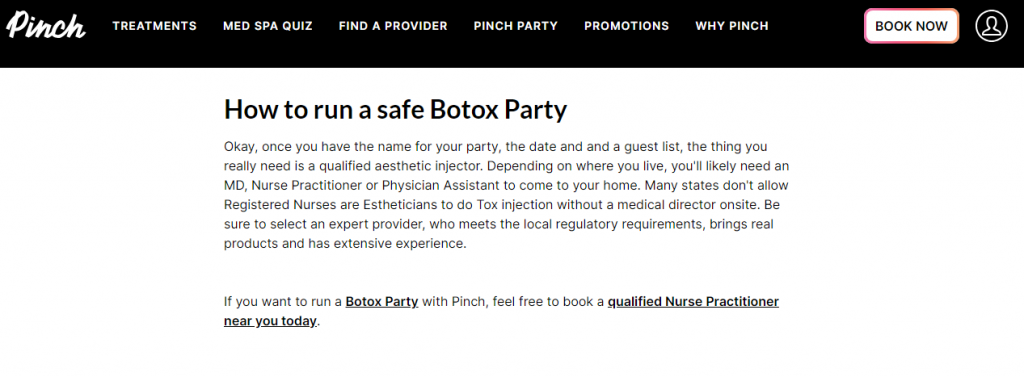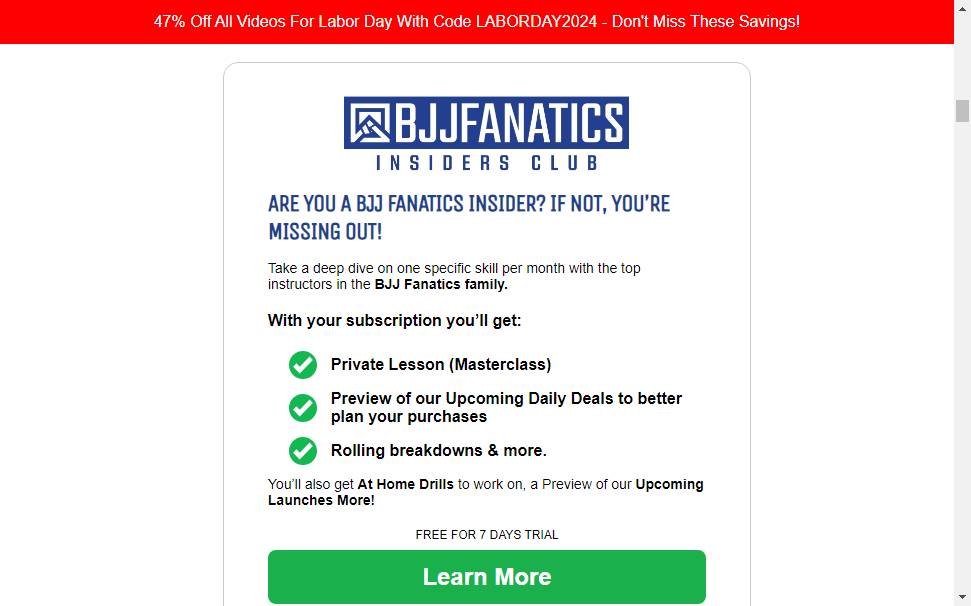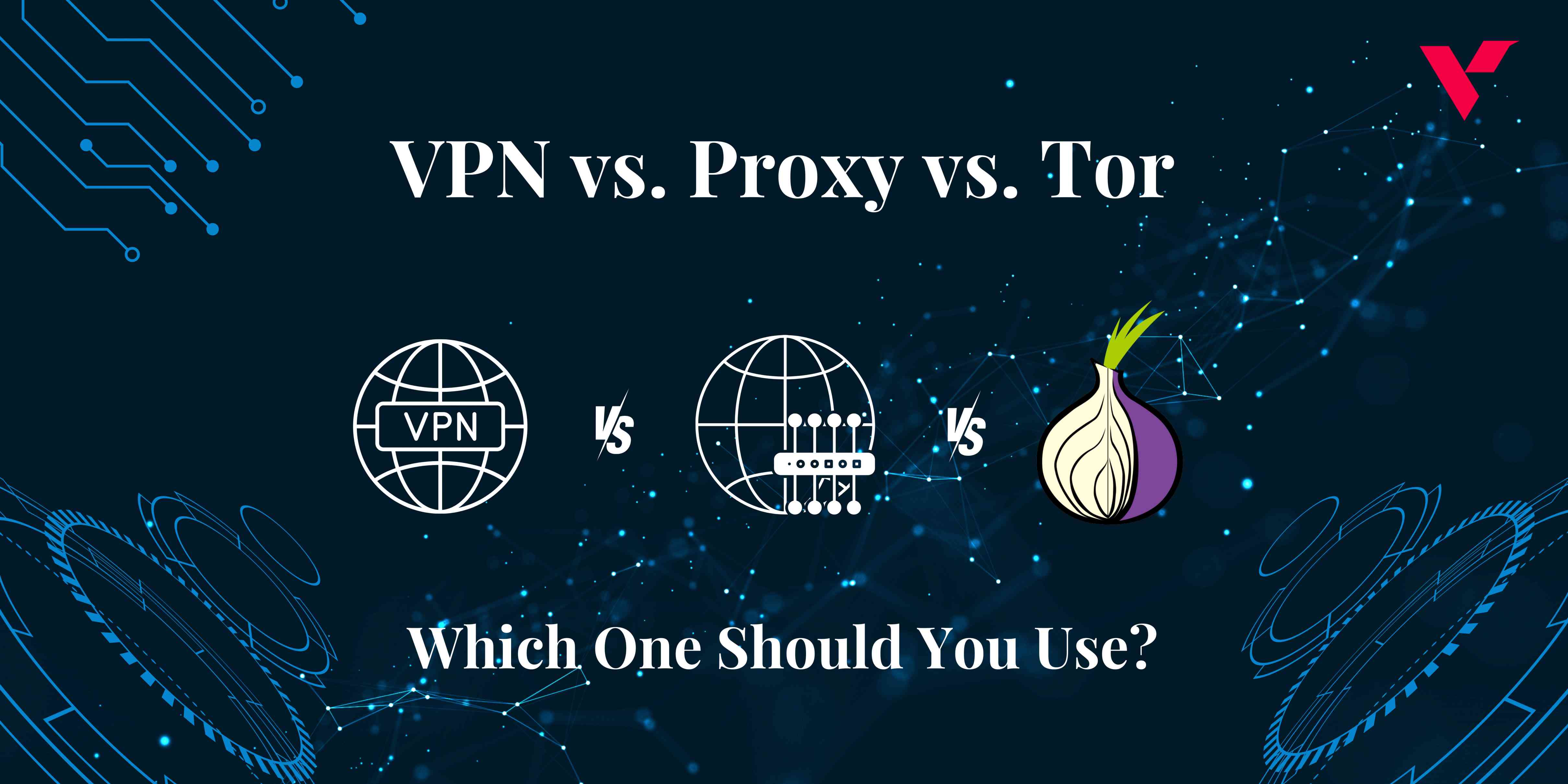Popular Tools by VOCSO
Creating content that converts readers into buyers isn’t exactly a cakewalk. As marketers who’ve been in the blogging game for years, we get it. You spend hours crafting the perfect blog post, only to watch your conversion rates flatline. It’s beyond frustrating.
Fortunately, there are some proven tactics you can use to turn your readers into paying customers. In this article, we will share eight content marketing strategies that we’ve successfully used to boost sales and revenue for our clients.
These aren’t complex, high-level tactics but simple, practical steps you can start implementing right away. So, if you’re ready to level up your blog content and see real results, keep reading.
Table of Contents
1. Introduce Your Product in a Meaningful Way
Most brands don’t realize that people aren’t coming to their blogs to be sold. They’re there because they’re looking for content that’s interesting, entertaining, or genuinely helpful.
So, if you suddenly start pitching your product or service in the middle of an article, it’s going to feel jarring and disruptive. The key is to introduce your offer in a way that naturally ties into the topic at hand and provides real value to the reader.
Here’s How to Do This Right
- Identify the pain points, questions, or interests of your target audience.
- Then, craft content that substantively addresses those needs.
- As you’re writing, look for organic opportunities to mention how your product or service can help solve the problem you’re discussing.
- Don’t just list features – explain your product’s real-world benefits and how it can make your readers’ lives easier.
Example
A great example of this tactic comes from Pinch, a mobile med spa company.
In their blog post “75 Botox Party Name Ideas” blog post, they don’t focus on promoting their Botox services. Instead, they surround the discussion of their offer with genuinely helpful advice on how to host a successful Botox party.
They acknowledge the growing popularity of these events, explain why it’s important to have a licensed professional administer the treatments, and then naturally integrate information about Pinch’s qualified team of practitioners.

Source: bookpinch.com
Similarly, if you focus on your audience’s interests first, you’ll be able to make a meaningful connection with readers and position yourself as an adequate solution.
2. Be Bold with Product Page CTAs
When it comes to converting readers into buyers, CTAs in your blog post that lead to your product pages are absolutely vital.
Research shows that switching from text-based CTAs to bold, visually striking buttons can boost conversions by an impressive 32%. That’s because buttons naturally draw the eye and create a clear, action-oriented path for your audience to follow.
Here’s How to Do This Right
- Make your CTAs as prominent and attention-grabbing as possible.
- Ditch the small, text-only links in favor of large, colorful buttons that stand out on the page.
- Use action-oriented language like “Shop Now,” “Learn More,” or “Get Started” to inspire readers to click.
- Make sure to place your CTAs in logical, high-traffic areas where they’ll be impossible to miss.
Example
BJJ Fanatics, a brand that offers premium Brazilian Jiu-Jitsu instructional videos, does an excellent job with this strategy.
In their deep-dive post on professional MMA fighter Ben Askren, they seamlessly integrate bold CTAs as readers scroll through the engaging content.
Just as the audience becomes invested in Askren’s background and career, they’re presented with a visually striking “Learn More” button that leads directly to one of BJJ Fanatics’ signature video courses.

Source: bjjfanatics.com
By making its offer so clear and compelling, the brand creates an opportunity to turn casual readers into potential customers without disrupting the flow of the content.
3. Embrace Explainer Videos
Not everyone is going to want to read a lengthy blog post, no matter how compelling the content is.
That’s why smart marketers are increasingly turning to video to capture their audience’s attention. Research shows that educational and instructional videos are the most engaging type of video content created by businesses.
When you combine that visual appeal with the ability to clearly explain complex topics, you get a recipe for converting casual readers into invested customers.
Here’s How to Do This Right
- Create high-quality explainer videos that dive deep into the specific problems, questions, or pain points your target audience is facing.
- Use clear, conversational language to walk viewers through the steps of your solution, whether that’s a step-by-step tutorial, a product demo, or an overview of your service offers.
- Make sure to optimize your videos for visibility. Use eye-catching thumbnail images, relevant keywords, and prominent CTAs that guide viewers to your product pages.
Example
A great example comes from Vidpros, a platform that provides on-demand video editing services.
In their “Top Unlimited Video Editing Solutions” blog post, they lead with an engaging explainer video that explores the benefits of unlimited video editing. Sharing knowledge with their audience in this way also allows Vidpros to showcase their service as the ideal solution.
Source: vidpros.com
By creating a valuable piece of video content and strategically positioning it at the top of a blog post, you can capture your readers’ attention and seamlessly introduce your offer.
4. Discuss Competitor Shortcomings in a Professional Way
Your target audience is likely evaluating multiple options as they move through the buyer’s journey. And whether you like it or not, that means they’re going to be comparing your offer to the competition.
Rather than shying away from this reality, clever content marketers are embracing it as an opportunity to demonstrate their expertise and position themselves as the clear choice.
Here’s How to Do This Right
- Approach this strategy with a confident yet professional tone.
- Resist the urge to bash or insult your competitors – that will only make you look petty.
- Instead, take an objective, fact-based approach that highlights the genuine shortcomings of their products or services.
- Outline specific reasons why your audience should avoid them, whether it’s inferior features, poor customer service, or a track record of issues.
- Make sure to do so in a way that positions you as the solution, not just the alternative.
Example
Medical Alert Buyer’s Guide, a website that reviews medical alert systems, executes this tactic brilliantly in their “7 Reasons You Shouldn’t Buy Life Alert” article.
Rather than simply trashing their competitor, they provide a detailed, well-reasoned argument for why customers should steer clear. They acknowledge the areas where Life Alert excels but ultimately make a compelling case for their own superior offers.
Source: medicalalertbuyersguide.org
Following the same principle, you’ll be able to build trust with your audience and establish your brand as a trustworthy expert in your industry.
5. Engage Readers with Interactive Content
Offering only static blog posts isn’t enough to captivate your audience. You need content that actively engages readers and gets them invested in your brand.
That’s where interactive elements come into play. By incorporating quizzes, polls, calculators, and other interactive features into your content, you can transform passive consumers into active participants.
Here’s How to Do This Right
- Ensure that the interactive content is relevant and adds value to the reader’s experience.
- Make it easy to use and visually appealing. Integrate it seamlessly into the blog post.
- Guide your readers toward the interactive element naturally, making it a helpful part of their journey rather than a distraction.
- Consider the end goal (whether it’s collecting leads, driving sales, or simply enhancing engagement) and design your content to support that outcome.
Example
Take Dossier, a retailer specializing in luxury perfumes, as an example.
In their “How to Choose the Right Perfume” blog post, they smartly integrate an interactive quiz that guides readers toward finding the perfect fragrance match.
Since customers can’t physically smell Dossier’s products online, this quiz removes a key barrier to purchase by helping shoppers feel confident in their selection.
Source: blog.dossier.co
So, whether you’re offering a style recommendation tool, a savings calculator, or a personality-driven quiz, the key is to create interactive content that solves a genuine problem or pain point for your target audience.
When done right, this tactic can transform casual browsers into qualified leads and loyal brand advocates.
6. Use Contextual Links in a Subtle Way
The power of the humble hyperlinking shouldn’t be underestimated. Strategically placed links within your content can serve as subtle yet effective CTAs, guiding your audience deeper into your sales funnel without disrupting their reading experience.
But the key is to do this in a way that feels natural and genuinely helpful, not like a heavy-handed sales tactic.
Here’s How to Do This Right
- Identify logical, contextual opportunities to link out to relevant products, blog posts, or other resources.
- For example, if you’re discussing a specific feature or use case in your content, link to the corresponding product page.
- If you reference a related topic, link to a previous article you’ve written on the subject. This allows you to maintain the flow of your primary narrative while simultaneously encouraging readers to explore your full suite of offers.
Example
Smartwool, a brand specializing in outdoor clothing made of premium wool, executes this tactic flawlessly in their Guide to Wearing Wool in the Summer.
Throughout the educational, value-driven content, Smartwool strategically places subtle links to relevant product pages and complementary blog posts.
So, as readers absorb the informative advice, they’re also organically encouraged to check out Smartwool’s summer-friendly wool apparel or learn more about how to keep it clean.
Source: smartwool.com
Blending contextual links into the user experience will keep your readers engaged and guide them toward potential purchase decisions without ever feeling pushy or disruptive.
7. Let Your Customers Vouch for You
When it comes to building trust and credibility with your audience, there’s nothing quite as powerful as real-world proof.
Studies show that 73% of the most successful content marketers leverage case studies to showcase their expertise and the tangible results they’ve delivered for clients.
After all, why should potential customers simply take your word for it when they can hear directly from the people who’ve experienced your products or services firsthand?
Here’s How to Do This Right
- Let your satisfied customers do the talking.
- Craft detailed case studies that discuss the specific challenges they were facing, the solutions you provided, and the measurable outcomes they achieved.
- Use their own words and testimonials to bring these stories to life, highlighting their unique perspectives and the transformative impact your solutions had on their business.
- Get creative – supplementing your written case studies with customer videos or audio clips can make them even more compelling and authentic.
Example
A great example comes from Klaviyo, a leading SMS and email marketing automation platform.
On their website, Klaviyo features numerous case studies that pull back the curtain on how they’ve helped clients achieve remarkable results. One case study in particular spotlights a brand that used Klaviyo to grow their annual revenue by an astounding 6,400%.
To really drive the point home, Klaviyo includes a video interview with the brand’s co-founder, who applauds the ease of use, personalized support, and transformative impact of their platform.
Source: klaviyo.com
This authentic, customer-driven narrative not only showcases Klaviyo’s effectiveness but also builds trust with potential clients by letting the results speak for themselves.
8. Perfect Your Blog with Advanced SEO Techniques
Before you convert readers into buyers, you need to actually get those readers to your site in the first place. That means mastering the art of search engine optimization (SEO).
While the basics of SEO, like keyword research and optimized content, are table stakes, savvy content marketers are taking their strategies to the next level.
The results speak for themselves: There are examples of companies that have used advanced SEO techniques to drive a 2,900% increase in website traffic.
Here’s How to Do This Right
- Start by diving deep into topic clusters and pillar content. Instead of just targeting individual keywords, map out related subtopics and create comprehensive, long-form articles that position you as the ultimate authority.
- Complement this with a robust internal linking structure that guides readers deeper into your site.
- Another often-overlooked tactic is to leverage user-generated content (UGC) to boost your SEO. Encourage customers to leave reviews, testimonials, and other brand-relevant content on your site.
- Then, strategically incorporate this social proof into your pages. This will help enhance your credibility. What’s more, search engines view UGC as high-quality, relevant signals that can improve your visibility.
- Don’t forget the importance of technical SEO – things like page speed optimization, schema markup, and XML sitemaps can make a huge difference in your rankings.
The key is to approach SEO holistically, blending time-tested fundamentals with cutting-edge techniques.
When executed properly, this multifaceted strategy can transform your blog from a passive lead generation tool into a powerful organic traffic driver. It’s the foundation you need to successfully convert your readers into loyal, profitable customers.
Final Thoughts
The strategies we’ve covered here are all about creating meaningful connections, building trust, and guiding your audience toward taking action.
Now it’s your turn to apply these insights and see how they can transform your blog. Keep in mind that every small step you take brings you closer to driving more traffic and generating more revenue.
So, pick a tactic from this list that genuinely excites you. Then, commit to perfecting it over the next month. Whether it’s crafting killer CTAs or creating captivating videos, give it your all.

















